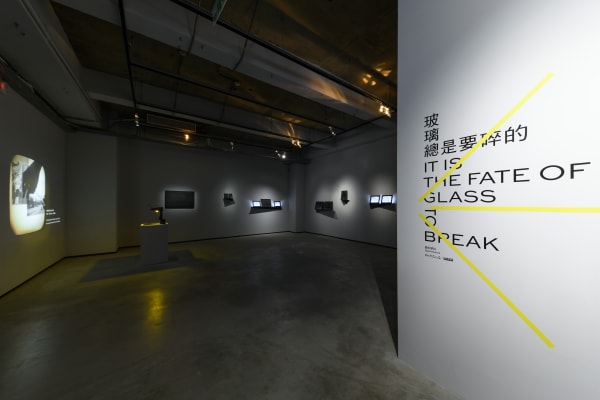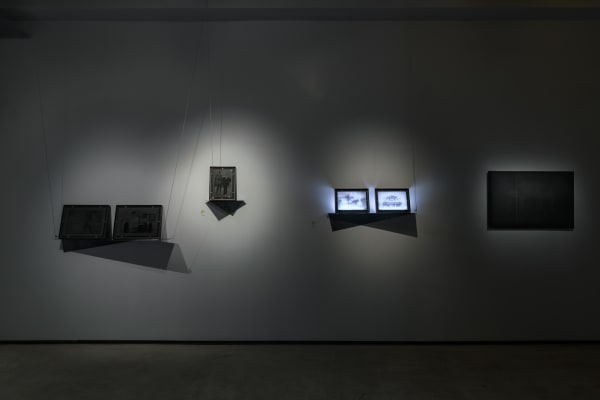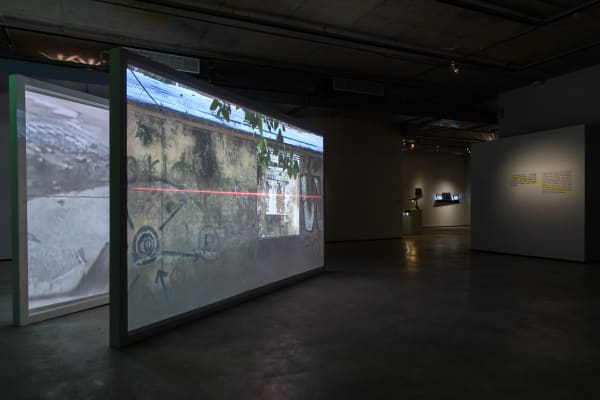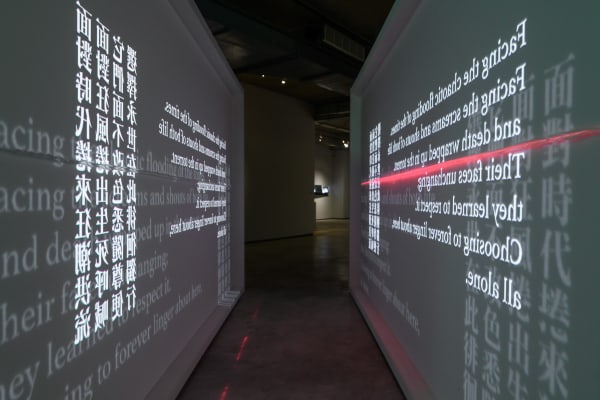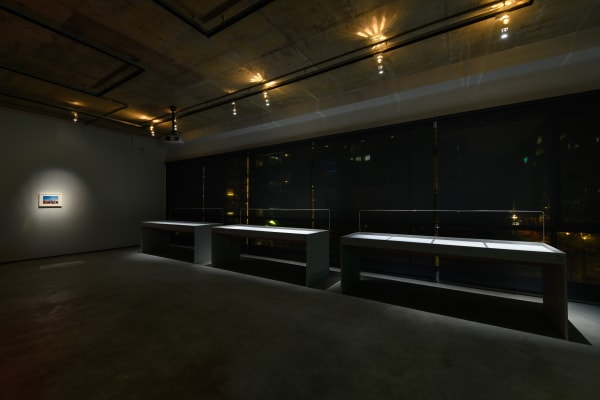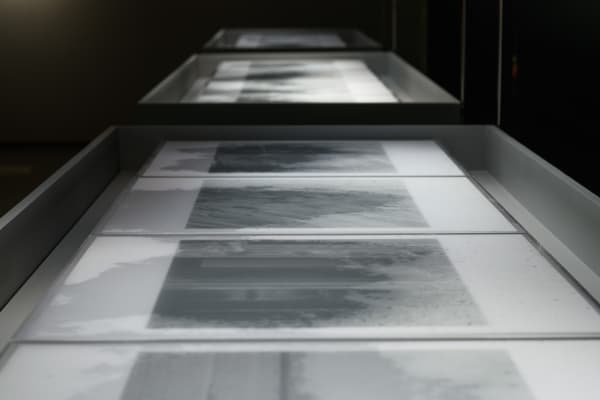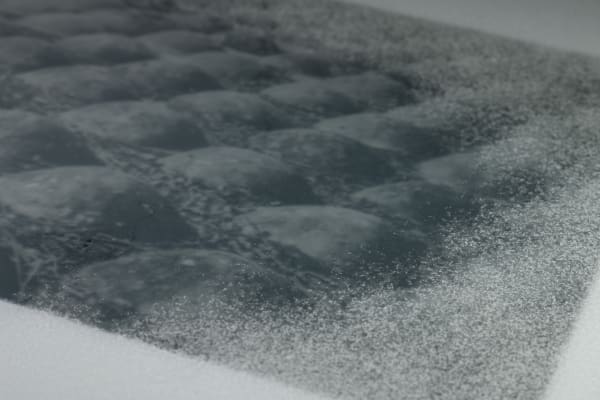It is the Fate of Glass to Break: Curated by Jay Chun-Chieh Lai
Curated by
Jay Chun-Chieh Lai
Artists
Chien-Chung Ding, Fei-Hao Chen, Chih-Chung Chang
TKG+ Projects is pleased to present It is the Fate of Glass to Break, curated by Jay Chun-Chieh Lai, exploring disasters, forecasts, as well as the imagery that follows, from multiple perspectives based on history, video, and installation. Deriving from a French saying, the exhibition title suggests the fatalistic idea that all events are subject to destiny.
The concept for the exhibition began with the 2018 collaboration between Chien-Chung Ding and Fei-Hao Chen, an experimental installation titled Up to 121 that discusses the relationship between Typhoon Herb and Taiwan's local history. The number "121" refers to the high water mark for the flooding of the Banqiao 435 Art Zone in New Taipei City, when Taiwan was hit heavily by Typhoon Herb back in 1996. It could be considered a record flood as well as an ominous sign. For the local people, "121" is a scar left by the typhoon.Water mark 121 serves as a future indication when juxtaposed with rainfall estimates. Yet in fact, the number 121 is often seen as the past, because people cannot catch up to the present and the number fails in its function to warn. Delving further into this notion, the exhibition investigates how humanity accumulates established realities within a continuous time loop. The "given" number 121 manifests a conundrum of time: on one hand, it serves as an objective system that convinces people to believe in and attempt to control crises. On the other, the number is meant to counter the fading memory of disaster events, yet paradoxically, the archived events will eventually be forgotten - for there are always new events or crises that will overwrite the old ones.
Most of the predictions will be translated into imagery, like climate predictions as well as the stock market trends. There is a similar vein of logic between economic predictions and disaster warnings: both are gambling on various figures, betting on the future, as well as establishing an imagination of (post-) disaster. This kind of imagery signifies a series of background information systems. But in the meantime, it is also imagery about (the) images themselves, the so-called "metapicture," becoming the reference for people to understand the original pictures. To use Slavoj Žižek's theory of "fantasy," this schematism "teaches us how to desire." Fantasy consists of both flaws and mutual conflicts. On the one hand, fantasy criticizes the unsatisfactoriness of reality, and acts temporarily as the Real, but on the other, fantasy demonstrates that gazing into reality is impossible. Just like these piled up images of predictions, fantasy shows you how to recognize the danger lying between the images, but in reality, amidst critical threats, they are merely images of light on a backdrop. Light-emitting images are like metaphors, showing us a path to the future from within the ensconcing glint of the light.
These three artists analyze the disaster narrative from three different angles. Chien-Chung Ding finds the sensible touch through his mastery of cold, objective reality. He builds an open viewing mechanism that allows the viewer to respond to what they see. Through text and history, Fei-Hao Chen explores predictions and performances from a post-construction perspective, as well as climate predictions and the ideology behind their imagery. If Fei-Hao Chen's piece is the visualization of documents, then Chih-Chung Chang's work is an attempt to delineate the Real in an ideological mixture of images-cum-charts as he paints an image of history.
Many images in this exhibition are made from special ink. They resist the destructive power of water, while relying on water to reveal themselves. Together they display the metapicture of memory. The development of the image gradually disappears as water dries out. This fleeting moment evokes humanity's forgetfulness about disasters. Yet, being forgotten does not mean it never happened or existed. The penetration of dripping water is a counter-image that inscribes the moment. It not only reminds us of the present, but also tends to break the destined time loop, allowing us to reflect on disasters as well as our fate.
Chien-Chung Ding
Born in Taipei in 1983, Chien-Chung Ding focuses on the spatial relationship between objects in his practice, as he examines the repetitive nature of mediums and the idea of futile labor, through the sounds, light, and shadows produced by the mechanical devices he designs. Using light as his medium, the artist conjures a connection between works while highlighting the relationship between space and time. Recently he shifts his focus from mechanicality to the natural state of the body within the space it occupies. He also expands his investigation of light to include the relationship among the viewer's body and memory, the temperature, humidity, touch, as well as kinetic energy. He has participated in numerous residency programs, including La Maison Laurentine, Champagne, France (2002), and Hangar, Barcelona, Spain (2016).
Fei-Hao Chen
Born in 1985, Fei-Hao Chen now lives and works in Taipei, Taiwan. Conversant with writing, the artist examines history, culture, social change, and technological development through conceptual photography and the moving image. Installation, video, and literature are also part of his creative means to investigate the possibilities born out of a blending of diverse mediums.
Chih-Chung Chang
Chih-Chung Chang was born in 1986 in Kaohsiung. His practice revolves around painting, writing, video, sound, and installation. Recently he has begun to explore the interrelationship between humanity, civilization, and nature through the motifs of the ocean, ships, and harbors in a scrutiny of personal memory, field investigation, and family history. He was part of the 2017 artist and scientist residency program "The Arctic Circle" in Svalbard, Norway. As a cofounder of Taipei-based alternative space Waley Art, Chih-Chung Chang is deeply involved in community activities and repurposing of idle space through art promotion and education programs. He is also a published illustrator.
Jay Chun-Chieh Lai
Born in 1983 in Tainan, Jay Chun-Chieh Lai received his master's degree in curating from Goldsmiths, the University of London in 2016. He now lives and works in Shanghai and Taipei. He has curated numerous exhibitions at the Taipei Contemporary Art Center, Hong-gah Museum, Aki Gallery, and ModeA Contemporary. He is a member of the International Association of Art Critics. His research centers on the imagery-text relationship, the moving image, and curatorial studies. Recently he has initiated a series of curatorial research projects where he reexamines the interrelationship between humanity and the world in a dissection of everyday behaviors that have long been overlooked, namely, listening, speaking, reading, and writing. As part of this initiative, Radical Forms of Writing was held at the Hong-gah Museum in 2017, and received a nomination for visual arts award from the Taishin Bank Foundation for Arts and Culture.
Sponsors|Department of Cultural Affairs Taipei City Government, Tronk Interactive


